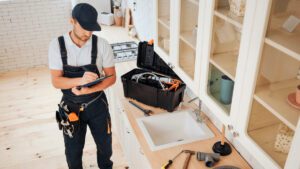Investors who fail to account for rental property expenses risk losing money on their investments. Without a solid understanding of the costs involved, investors may find themselves in the red, struggling to turn a profit or even facing the prospect of selling their property at a loss. Rental property maintenance is a crucial aspect that investors must take into account to avoid losing money on their investments.
Neglecting to factor in the expenses associated with maintaining rental properties can result in financial setbacks, leaving investors in the red and struggling to generate profits. In extreme cases, investors may even have to sell their properties at a loss. Therefore, it’s essential for investors to have a solid understanding of rental property maintenance costs and to allocate adequate funds for repairs, upgrades, and regular upkeep to ensure their investments remain profitable over the long term.
Estimating Rental Property Expenses
To estimate rental property expenses, industry standards suggest several rules of thumb. The 50 percent rule recommends setting aside half of the property’s annual rent for maintenance expenses. The 1 percent rule suggests setting aside 1 percent of the property’s value per year, while the square footage rule recommends setting aside $1 per square foot annually.
In addition to these guidelines, investors must consider a range of operating expenses, some of which are predictable, such as property taxes and routine rental property maintenance costs, and others that are more variable, such as emergency repairs and appliance replacements.
Operating Expenses for Rental Property
To create a budget for rental property expenses, investors should consider the following:
- Property taxes: Investors should consult the county assessor to determine current property taxes, as these may differ from the seller’s listed taxes. Buyers should also find out what their property taxes will be after they close escrow.
- Electricity: Multifamily properties may require higher costs due to the electricity needed for common areas of the property.
- Pest control: In the event of an infestation, treatment for the average single-family home can cost around $150 for a single treatment.
- Waste management: Property owners are responsible for maintaining cleanliness by providing trash cans and coordinating regular collection.
- Insurance: Owners may need particular coverage based on their property’s location and potential risks.
- Homeowners Association (HOA) fees: It’s important to know the current fees when fees increase, and if there’s a special assessment on the horizon.
- Property management fees: Owners can expect to pay six to eight percent of the rental income toward the management fee.
- Vacancy: Owners should factor in some vacancies into their budget.
- Routine maintenance: This includes landscaping, cleaning, and trash and recycling collection.
- Seasonal maintenance: This may include pruning trees, snow removal, and cleaning of gutters.
- Appliance maintenance: It’s in the landlord’s best interest to maintain appliances themselves to ensure their investment is adequately taken care of.
- Emergency maintenance: Property owners should always plan for emergencies, such as a heater dying during winter, an AC giving up during a heatwave, or pipes bursting in the middle of the night.
- Painting and flooring: Applying a fresh coat of paint and replacing worn-out flooring may be necessary between tenants.
- CapEx, or capital expenditure: Owners should budget for expected capital expenditures, such as the cost to upgrade and improve big-ticket items like the roof, water heater, and appliances.
Also read:
- Preventative vs. Reactive Property Maintenance
- Preventive Home Maintenance: Guide for Property Managers
- Spring Home Maintenance Musts [Checklist]
By understanding the costs involved in property maintenance, investors can make informed decisions about purchasing and managing rental properties. With a clear budget in place, investors can ensure that their investment remains profitable for years to come.

